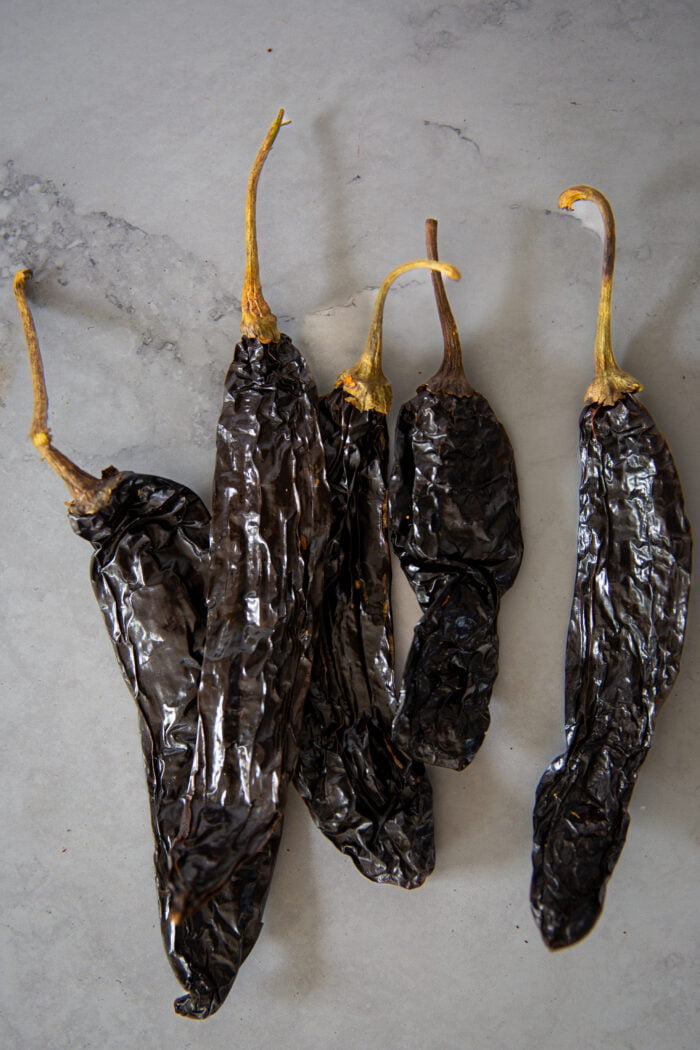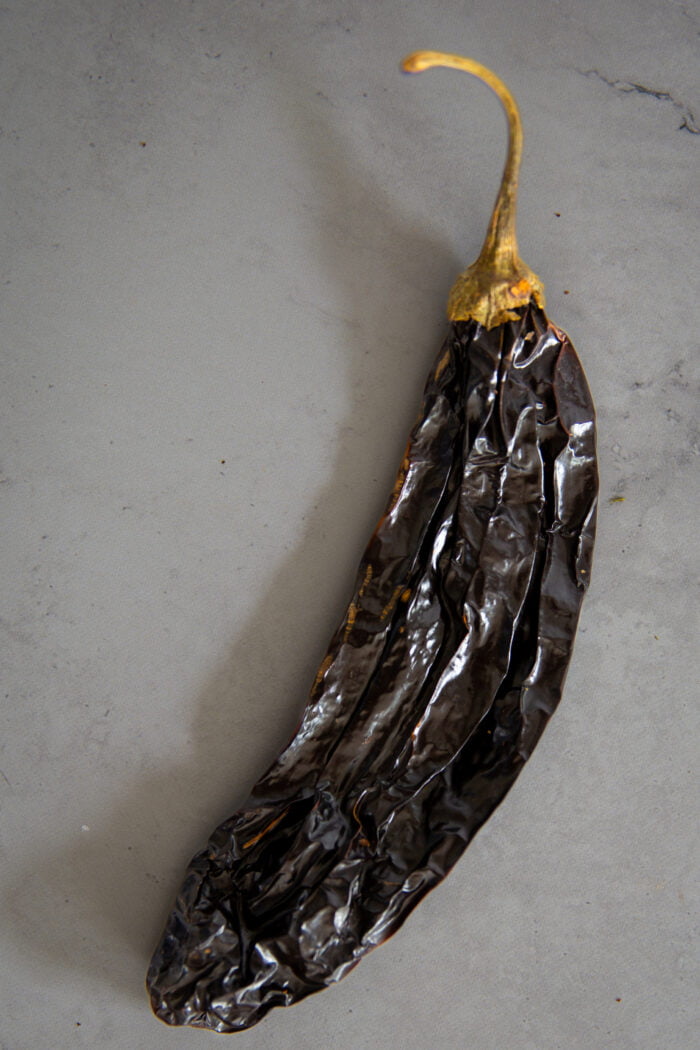The pasilla pepper is a mild pepper typically used for cooking, particularly in Mexican dishes. They are so delicious in soups, sauces, and many more dishes; learn more about the pasilla pepper here.

What are chiles pasillas?
All chile pasillas start as fresh chilaca peppers grown and picked from the plant. Then, they’re ripened and completely dried. Once that process is complete, they’re officially chiles pasillas.
As they mature, their color can get even darker, which has given them the name ‘chile negro’ – black pepper. Usually, they are six to nine inches long, and around an inch in diameter.
Traditionally, the peppers are dried under the sun to make them into chiles pasillas, though nowadays, a dehydrator is commonly used. They can then be ground or rehydrated before use.
Is Chile pasilla the same as chile ancho?
No – these two types of chile pepper are different since they come from two different plants. However, it’s worth pointing out that both plants are native to the same rough region (from southern North America to northern South America), so the plants are quite similar. They have evolved alongside one another, creating a chile pepper with similar flavors.
Ancho chiles are milder than pasilla chiles. Ancho is generally considered to be less sweet than pasilla chiles while also being less hot. Aside from that, the overall flavor is quite similar. This means that while they’re not exactly the same as one another, ancho chiles make a great substitution for chile pasilla.
How spicy is Chile pasilla?
Chile pasillas aren’t too spicy in the great scheme of things. The number on the Scoville scale is the number of water droplets needed to dilute the juice of the chile until the heat can no longer be tasted. For example, the Carolina Reaper (the hottest chile pepper out there) has a 1.4 – 2.2 million Scoville heat unit. This means that 1.4 to 2.2 million drops of water are needed to completely dilute the heat from one of these peppers.
The Chile pasilla has a Scoville rating of 1000-2500. This places it somewhere between the Poblano and the Jalapeño pepper on the scale. This means that it’s warm for beginners, but not overly painful for most people.

What is pasilla chile called in English?
Well, there are two answers to this question.
The word pasilla translates in English to mean ‘little raisin’. This is likely because the chiles are small, dark, and wrinkled like a raisin. However, this earned them the name many years ago, and it simply stuck.
However, nobody calls them that. Instead, we would say they’re commonly called ‘pasilla chiles’ no matter what language you speak.
So how are Pasilla chiles used?
Pasilla chiles are used in all sorts of different dishes. The common denominator is that the dishes are typically from Mexico or Central America, which is the region where chile is most commonly found.
The flavor of the chile is often described as ‘raisin-like’ – it is earthy and fruity, though it’s also a little smoky. They’re quite fragrant, also, so they smell a little like prunes to some people.
This balance between heat and flavor means it’s used in several dishes – from salsa to mole. We like seeing it in a soup, as the broth of the soup will carry the flavor of the chile to all the other ingredients, leading to a truly tasty meal.
How to Rehydrate Pasilla Chiles
Rehydrating your chiles is perfectly easy, which is good. Start off by removing the stems from the chiles and cutting them open. Remove the seeds and veins, and then toast the chiles for about a minute per side. You’re doing this to release fragrant oils – so stop when the chiles are aromatic.
Bring a pot of water to a gentle boil before turning off the heat and adding the chiles. Cover the pot, and allow the chiles to rehydrate for ten to fifteen minutes. At this point, they should feel pleasantly soft and pliable. When they do feel soft, they’re rehydrated and ready for use!
Where to buy pasilla peppers
If you don’t have a specialty grocery store near you, your best bet is to head for a Mexican market – they’ll almost certainly be on offer there. Instead, you could order the chiles online – it may be easier than tracking them down in real life.
If you’re looking in your grocery store, check near the spice aisle – that’s where they’re most likely to be.
Selecting and storing Pasilla Peppers
The chile peppers should be pliable and supremely dark in color. Avoid them if they’re brittle or cracked – they’re likely to be stale. On the other end of the scale, exceptionally soft pasilla peppers are likely too moist, so avoid those.
To store chiles, or powder made from them, use an airtight container to control moisture levels – low moisture is best! Store them in a cool, dark spot to keep their flavors good for as long as possible.
